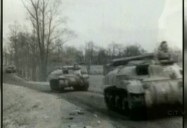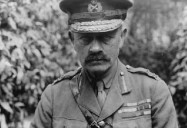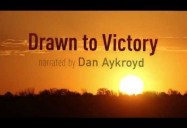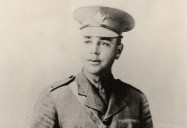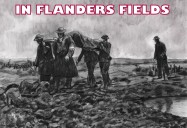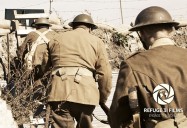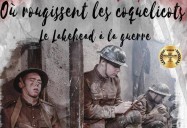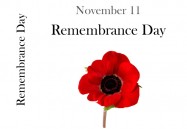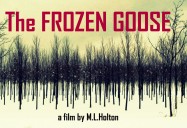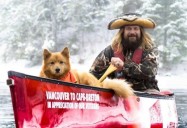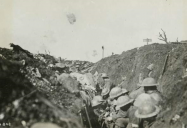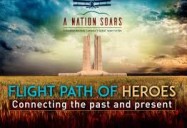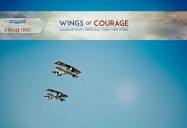
- Waterloo Catholic D S B Streaming Playlist
- WCDSB - After the Last River Playlist
- WCDSB - Remembrance Day Playlist
WCDSB - Remembrance Day Playlist
Wings of Courage: A Nation Soars Series
Width Height
Grade Level: 6 - 8, 9 - 12, Post Secondary
Aviation experiences a massive technological and tactical progression during the course of the First World War that forever changes the nature of warfare. Wings of Courage showcases the various roles Canada's early aviators played through the moving profiles of five notable Canadian pilots.
|
Running Time: 48:00 Country of Origin: Canada Captions: |
Producer: Sound Venture Copyright Date: 2016 Language: English |
Video Chapters
-
Wings of Courage: A Nation Soars Series 48:26
Aviation experiences a massive technological and tactical...
TRANSCRIPT
Close- [MUSIC PLAYING]
- [GUNFIRE]
- The aeroplane is an invention of the devil, and will never play any part in such a serious business as the defense of the nation! Sam Hughes, Canada's Minister of Militia and Defence, 1914.
- [MUSIC PLAYING]
- Clearly, the vision Sam Hughes had of aviation's future didn't quite pan out as he predicted. In actual fact, it was one of the understatements of the century as the aeroplane evolved into an integral weapon of war.
- It is actually phenomal, the fascination that people still have with aviation. And the fascination, I think, still comes from the wonderment that we can actually fly with these machines.
- People are fascinated by World War I aircraft. This was the modern fighter of 1917, and when we fought at Vimy Ridge.
- At an air show, you can touch, you can talk to clouds, you can talk to ground crew. The flying, that's fun. The people, that's more fun.
- You're going to disappear down there when you sit. All right. He's in there somewhere.
- When they see an old aircraft, and their fascinated with this breathing animal that in front of them, it's like an old steam train.
- There's a lot of people that don't even realize that there were airplanes during the First World War. Those who do know about it and know of the Knights of the Air, just the idea that anybody would take one of these rickety machines into combat just blows their mind.
- Do you got to stand up to shoot?
- Well, no. But there's only 39 rounds up there, because when they're gone, now you got to unbuckle, stand up, hold the stick between your knees, take the magazine off--
- Whoa, that's awesome.
- --throw it back, make sure it doesn't hit the tail.
- Oh my god.
- Meanwhile, the guy you put the 39 rounds into--
- [LAUGHTER]
- Hey, wait a minute.
- Hey, wait a minute.
- One air show, we had a young lady come up, and her father, he was a German. He had emigrated to Canada after the war. He had a unique distinction for Canada. He'd been shot down by Billy Bishop.
- [MUSIC PLAYING]
- Even as the First World War progressed, military strategists still debated what specific role the aeroplane should play.
- Most countries were skeptical of aircraft, simply because it was a new technology. There was not a lot of what we would call now strategic planning, or strategic utilization of aircraft.
- Nobody expected aviation to play the role that it did, especially not the British. Flying 1916, however, with the Battle of the Somme, and some of the horrible battles that'd been going on up to that point, the air war was increasingly important to the success of the ground war, with observation and photography, for example.
- The British Air Service of the First World War fundamentally focused on having an offensive spirit. What this meant was is they wanted to dominate the air over any battlefield that the British were fighting on. This often meant that in order to keep aircraft over the battlefield, especially if they were suffering losses, that they would recruit people, and send people to the front line with minimal training. We are talking literally hours.
- The casualty rate for pilots was staggering. But the insatiable need for new recruits to take their place only intensified as the war raged on.
- What they found was is that they were simply unable to train enough pilots in Britain alone. And so the empire started to look around for a staging ground for alternative places for training. And Canada ended up being selected because of its geographic proximity to Britain.
- They settled in Ontario, primarily because Ontario at that time had the largest population in Canada.
- The head of the corp put out a call for applications all over the country. So their were recruiting offices set up in the prairies, and the east coast, and in British Columbia. And interested men would go to those centers, be recruited there, and then head by train to Toronto, where they would actually start their training.
- [MUSIC PLAYING]
- The University of Toronto was selected to be the number four school of aeronautics. So basically, they would spend two months learning about the general principles of aeronautics, forces of flight, map reading, telegraphy, and photography. And then they would also have some instruction on enemy aircraft.
- Cadets were housed all over campus on the main lawns and the back fields, but they were also held in some of the dormitories and so forth.
- As the training program got going, it became apparent that they were going to need aircraft on which to instruct the new cadets. So a company called Canadian Aeroplanes was incorporated to build those aircraft.
- The process of construction involved a lot of indentured tradesmen who were carpenters by trade, millwrights, coach builders, they were very heavily involved in the construction of these machines.
- [MUSIC PLAYING]
- One of the stories that isn't as well known from the First World War is the role of Canadian women in aviation at this time. Canadian Aeroplanes employed up to 350 women. It may have actually been more during peak production. There were also several women still working at the Curtis Aeroplane and Motors factory, and there were some women working at Willys-Overland, who were developing engines.
- The skills were just absolutely phenomenal for what they were doing, and the timelines that they had to build these aircraft in.
- The JN-4 was the first mass produced aircraft in Canada. One of the numbers that gets thrown around for the number of aircraft that were produce at that facility is 2,900 aircraft, including spare parts. The JN-4 was an excellent trainer aircraft. It was very stable, and relatively easy to fly, which was great if you are just learning, and taking off and landing. However, once these cadets got over to their service squadrons, and were introduced to more advanced aircraft with rotary engines, their training quickly was known to be insufficient. But this was a great place to start.
- [MUSIC PLAYING]
- Once men completed their training at the U of T, they would move on to the actual flight schools, which were setup at airfields around what is now the GTA. The cadets invariably were crashing all around their airfields, and so they would land in farmers' fields, they would land in trees, they would sometimes even land on the hangars that they were supposed to be parking the aircraft in. And these were often comical in nature, but of course, that said, almost 140 airmen were killed as part of the training scheme during the war.
- [MUSIC PLAYING]
- 3,135 cadets completed their pilot training in Canada, with more than 2,500 sent overseas to Britain. Once there, they were streamed into either bombing, observation, or fighter squadrons. Many soon found themselves behind the controls of the nimble and aggressive Sopwith Pup.
- [MECHANICAL NOISES]
- What we're doing here is building the Sopwith Pup.
- [MECHANICAL NOISES]
- Any part of the [INAUDIBLE] Sopwith Pup thoroughly enjoyed it. Delightful aircraft to fly, fun, versatile. It did everything you wanted it to. So if you're going to build a World War One aircraft, it always struck me, this is the one to do.
- Their building a replica of Sopwith Pup, identical to the one that my father flew in World War I. And this project really recognizes dad's achievements.
- [MUSIC PLAYING]
- Tommy Sopwith, the designer, from the beginning, built float planes.
- [PLANE ENGINE]
- He went on to build the Sopwith 1 and 1/2 Strutter aircraft. And that was the first aircraft that many Canadians flew into combat. It was a two-seater. It was a reconnaissance aircraft, and a bomber aircraft. From that, Tommy Sopwith designed the smaller Pup. It wasn't called the Pup until an admiralty chap looked at it, and said, my gosh, you Sopwith 1 and a half strutter is giving birth to a pup. And the name stuck.
- You're replicating a design from 100 years ago. That aircraft was designed and built a dozen years after the Wright brothers flew. So stick, and wood, and baling wire sort of thing, but we've advanced more.
- Nicely done.
- Yeah, basically what we've done now is we've engineered a new airplane. So what we do is we take the original shape of the airplane, and we go completely modern. We engineer new spars, new control systems, new control ratios. We're primarily using aluminum structures now, steel and aluminum, where in the day, they were primarily all wood.
- Because we have modern materials, our structures are lighter than the original aircraft were. Therefore, they typically will take off and climb better than the original aircraft. They're stronger than the original aircraft would have been. But as far as directional control and things, they're more like the original airplanes in that aspect.
- Building an aircraft is a very methodical process that has to be done in a very careful and thoughtful way. The engineering involved may seem very simple in its concept, but the actual execution and the carrying out of that task can be very, very involved, and very meticulous in its minutae.
- [INAUDIBLE]
- It was pretty amazing what they accomplished in the day. It's one of the most spectacular times, I think, in aviation. There was a lot of experimenting going on. Things would change quickly in the field. Mechanics would take an aircraft and alter it in the field. It would improve the performance, or handling, or something that would immediately go back to the factory, and they would make the changes right away. It'd evolve very quickly.
- I've got a lot of respect for the guys that flew the airplanes in the day. They were flying aircraft that weren't up to the standards that we're flying these days. The materials weren't up to the standards, the engineering wasn't up the standards. The men did some very amazing things.
- [MUSIC PLAYING]
- While it would have probably been a great thing to experience, I don't know if I'd want to been in the seat that they had to sit in.
- [MUSIC PLAYING]
- The enduring legacy of First World War aircraft has lasted for well over a century. Recapturing this magical period of aviation is a passion that drives private enthusiasts at all scales.
- It's almost like a mission of mine to try to educate as many people as I can to how incredible these guys were. I've currently got about 150 or so built. The one thing that sets me apart a little from some other model builders is the fact that I'm putting the history behind these planes. That's what brings them to life. It's not just an object, these guys became part of the plane. And you can't separate the pilot from these planes, they were really one. And that, I find just fascinating.
- I always start off by building the interior. I put it in real wood into the floors. I actually use the sheets of cedar that come inside cigar tubes. And I cut those out, and lay them down as the floor, and I varnish them. Accuracy is absolutely vital to what I'm doing, because I'm honoring an actual person.
- [MUSIC PLAYING]
- Andrew McKeever was no stranger to receiving honors. Flying a Bristol fighter, he was the Royal Flying course top scoring two seater ace, with 31 victories.
- [MUSIC PLAYING]
- The McKeevers farmed outside of [INAUDIBLE] in the township on the second concession of township. The story goes that he was just a gentle farm boy, a nonsmoker, he didn't drink, very immaculate dresser at all times. He didn't join the Air Corps at the start. He joined the Queen's Own Rifles because, I believe, there wasn't an Air Corps at the start of the war.
- [INAUDIBLE]. By the right great [INAUDIBLE].
- [DRUM CADENCE]
- The community sacrificed a lot. Farm boys went, the bag manager's son went. The impact on the community was immense. We have a [INAUDIBLE] with 121 names on it. The town of Listowel at that time would have a population of probably between 1,500 and 2000. And to have 121 that didn't make it back, that's a lot for a town that size. I think they thought that Christmas would be the time they'd come back, because they were going to go over and get the [INAUDIBLE]. Unfortunately, didn't work that way.
- [MUSIC PLAYING]
- I think it's very important to carry on their legacy, and to never forget their accomplishments or their actions, because their bravery and courage, it was for us.
- [MUSIC PLAYING]
- [CANNON FIRE]
- Recruits for the Royal Flying Corps from the Canadian Expeditionary Force would come from primarily the infantry and the artillery. Artillery were preferred because that section of the Army was going to make the most use out of the information aircraft brought down. But if a member of the infantry or member of the cavalry was deemed to have the right stuff, if you will, usually, it's because they had distinguished themselves, or because they had been wounded. And they would be recruited into the Royal Flying Corps.
- The Bristol F.2B fighter was probably one of the most successful two-seat fighters of the First World War. Andrew McKeever, who is one of Canada's aces, was a huge proponent of this aircraft, and scored many victories in an F.2B.
- He had two kills the first day he flew into combat. The gun that I'm holding, the Lewis gun, is very heavy. And it surprised me that this would be in an airplane back in those days with the kind of weight that it does have. But this is the gun from McKeever's plane.
- Andrew was the hero that we didn't talk about. But mysteriously, on the second floor, there was a lithograph reprint of a painting called Five Down for McKeever. You get to see the landscape of France, and you get to see military planes in action, and his triumph, he and his gunner shooting down five of the enemy in one combat mission.
- My 97-year-old aunt had the package. And in the midst of these clippings is the letter from the king awarding the Distinguished Service Order to Andrew McKeever. I mean, this is an extraordinary document. But it's in with clippings from newspapers and personal letters. There's a fascinating picture of him standing beside a German airplane that he forced down. But it isn't triumphalism, it isn't bloodthirsty in any way, shape, or form.
- He made that machine do things that nobody else could. It looks like he did it without breaking a sweat. It looks like style was an essential part of what he was doing, because one of the other favorite details I love was that when he flew, he always packed a shaving kit so that if he was shot down over enemy territory and captured alive, he would continue shaving and looking good. [LAUGHS]
- [MUSIC PLAYING]
- There is a Scandinavian culture that believes you have two deaths. The first death is your actual death where your body ceases to live, and they consider your second death is when your name is spoken for the last time. I think it's important we continue their second life, as they have given us their first life.
- The town hasn't forgotten. The legion was named in 1987 after major Andrew McKeever. He was aggressive, he was courageous, he was brave, and he was a young man from Listowel, Ontario who did that.
- [MUSIC PLAYING]
- Soon after the war, McKeever's promising life came to a tragic end as he died Christmas day, 1919 due to complications from a broken leg. Andrew McKeever was only 25 years old.
- The Air War had an appeal unlike anything we can imagine today. The closest thing is probably to be an astronaut, to go into outer space. There was this allure that went with something that was new. It was almost the antithesis of the war on the ground, which was static, whereas the air war was mobile, it was fast, and it was captivating.
- It was considered a young man's game, not only because of the requirement for eyesight and reflexes, but because of the physiological stresses that the individuals went under. With no oxygen, with no heat, with terrible living conditions, and with the amount of stress you got on a daily basis, you had to have the Constitution of a younger person in order to do it.
- [MUSIC PLAYING]
- While the Allies and Germans were developing innovative ways to use aircraft, they quickly realized that whoever owned the skies could greatly impact the events happening on the ground. This epiphany launched a technological race that saw air superiority alternate from one side to the other.
- There is fundamentally a massive difference between a 1914 aircraft and a 1918 aircraft. The big thing that's going to change with these particular aircraft is going to be the engine, the power source for the airplane. At the very beginning, you're talking maybe 30, 40, 50, 60 horsepower engine. By the end of the First World War, you're going to see 200, 300 horsepower engines. And that's going to drive speed, altitude, and maneuverability. So you'll start to see armored aircraft for ground attack. You'll start to see metal aircraft, and more and more of these elements that we would take for granted these things.
- The Junker's J 1 is the world's first all-metal aircraft. The J 1 was used primarily for low-level flying and trench strafing. Many German pilots wrote to Hugo Junkers specifically thanking him for the design of this aircraft, as they were convinced it saved their lives.
- During the First World War, there were two types of personalization basically of aircraft that would have occurred. One would have been officially recognized and sanctioned, which are basically squadron emblems, squadron markings such as a horseshoe, or a shamrock, or a skull and crossbones of things. The Germans encouraged bright dazzle sort of individual markings on the aircraft.
- Richthofen, the Red Baron, who, because of his fame, had a lot of liberties, and he decided, let's put some fear into these guys, and started letting his guys paint their planes all kinds of bright colors. That and the fact that they were moving around from base to base like gypsies wherever the fighting was, they picked up that name of the Flying Circus.
- [MUSIC PLAYING]
- Roy Brown, flying a Sopwith Camel, reluctantly achieved lasting fame for his role in shooting down the Red Baron. Brown, after viewing the Red Baron's corpse, remarked that there was a lump in my throat. If he had been my dearest friend, I could not have felt greater sorrow.
- [MUSIC PLAYING]
- Carleton Place located about half an hour west of Ottawa. In the era when Roy Brown was around, the town would have been about around 4,000 people, and it was a logging town, essentially. The Brown family operated the local gristmill. And they were a very well-to-do and successful family. His family did not want him to go into the military at all. They wanted him to help build their business. But his wishes were to go into the military, and ultimately into flight.
- He was trained by the Wright brothers, and they were four Carleton place pilots who went down to Dayton, Ohio, early 1914. Paid the expenses, and received their certification from the Wright brothers themselves. As a flight commander, he took great care of his pilots. And he was always the first to lead the battle, to go up into the air first, and then he was always the last to return. And certainly, if someone was in trouble, he would go to their defense. So he earned a lot of respect. Never lost a man.
- Air combat tactics evolved throughout the First World War. There were individuals out there who seemed to function best as lone hunters. For instance, Billy Bishop was a lone hunter. They let him go off and do his own thing, because that seemed to work. Most individuals, though, would have fought as members of a team, whether it was a group, or whether it was two individuals.
- Roy brown had a policy that when he brought a new individual into his unit, he would get them to hang back during the first couple of times that they were in combat so that they could observe, because he knew that new people, people who didn't learn the skills of looking around and never flying in a straight line were basically easy meat for the enemy. On the occasion where he is credited with shooting down the Red Baron, one of the new people on his unit was Wop May.
- He had Wop May fly above and stay out of the combat, in which Roy Brown and the rest of his unit got involved with Baron Von Richthofen's Flying Circus. May, who get so excited, and like any young keen aviator wanted to get in on the combat, dove down, emptied his machine gun without hitting anything, and then started to fly back to safety in his own lines. But he flew back without looking, without dodging, and the Red Baron spotted him. And the Red Baron basically got on his tail, and was actively looking to shoot Wop May down.
- Brown saw that Wop May was in trouble, and started pursuing this red [INAUDIBLE] with no idea that Von Richthofen was in the plane, that he was the pilot. But there was a number of bursts, and Von Richthofen actually broke his normal rules of engagement. He flew far closer to the ground than he normally would, and fire over allied territory than he would normally.
- But in any case, there were Australian ground troops as well, firing at him with rifles, and Brown and others firing at him from the air. And he was hit. It was a very hard landing, the plane buckled. He was still alive, and he shut the plane off so the gas lines wouldn't explode, and then he died.
- Did the fatal bullet comes from Roy Brown, who was pursuing him, or did it come from the Australians on the ground shooting up at him? I think primarily, the biggest thing to understand is the Red Baron was eliminated from the German order battle. Who managed to shoot him down will probably be a controversy we'll never solve. But the very fact that he wasn't there probably saved the lives of a whole bunch of airmen who wouldn't have made it through the First World War with him still alive.
- So as a Roy Brown society, we started collecting some artifacts. Revell toy company produced a Roy Brown Sopwith Camel. And more interesting, their were two fully illustrated comic books produced about Roy Brown and the battle. We think Roy Brown is a national hero, and we know he's not the [INAUDIBLE] with the most kills. Billy bishop certainly was. But Brown, to have downed Von Richthofen, a major emblem in the war, major point of recruiting for Germans, major bond salesman for the Germans was a direct dagger in their heart, so to speak.
- So yes, he deserves the credit that he got for that heroic effort. These are decent, hardworking men who rose to the occasion to defend the world when it needed defense. And they need not to be forgotten.
- Roy Brown worked as an accountant, and founded a small airline after the war, but never flew again as a pilot. He attempted to re-enlist with the Royal Canadian Air Force at the start of the Second World War, but his application was refused. He died at the age of 50 on March 9th, 1944.
- [MECHANICAL NOISES]
- It's been a very interesting amalgamation of a lot of skills.
- To pull on this metal is this way.
- OK.
- The top one is going to overlap down to here.
- I have members on the team who have been aircraft maintenance engineers. We have got carpenters on the team. It's been a real pleasure to watch them combine their skill sets of working with metal, working with cloth, working with wood. It takes an immense amount of knowledge from a wide variety of disciplines.
- Oh, there you go.
- The standard of drawings that were used back then were very different to what we use now. So what we've had to do is actually translate the drawings into modern engineering maps. And once we've done that, we've been able to sit back and compare how they approached the engineering lessons of the time, and using the little knowledge that they had about flying, and the stresses of flying, and we look at what they did and how they did it. And it's just so phenomenal to see what they did, and how they got around a lot of the problems and they didn't know they had until they literally threw the aircraft for the first time.
- Well, this time around, we're looking at it from a more advanced aeronautical perspective. We're not using [INAUDIBLE], we're using computers. We can fix things, if you want to use the term, that weren't quite where they shouldn't be.
- --first third.
- Right, right.
- Yeah, this fills it.
- What we have here is an example of the presentation versus the reality. We've replicated the actual [INAUDIBLE] machine guns that were mounted on the aircraft. The replicas weigh barely half a pound. The original real one, which is here, weighs 33 pounds, a lot heavier. We're keeping in mind, this was designed to shoot real bullets, this one is designed to look good.
- [INAUDIBLE] was a very effective weapon in its role. It had a high rate of fire between 400 and 500 rounds per minute. Very accurate, very reliable. And when you're fighting in the air, you really don't have time to start pulling over to the side of the road, and doing mechanical repairs. So you needed a reliable weapon that did the job, and that was very much the case with the Vickers mach 2.
- [MUSIC PLAYING]
- Gerald Birks, piloting a Sopwith Camel, had 10 victories to his credit. He was the favorite wingman of the most decorated serviceman in the history of Canada, Billy Barker. And together, they terrorized the Italian front.
- [PLANE ENGINES]
- [MUSIC PLAYING]
- Henry Birks came out from northern England. It was a family business, and my grandparents had four sons. And all of them were expected to go into the family business, that's what you did.
- [MUSIC PLAYING]
- It was the glory days for Montreal. All the banks had their head offices here. The CPR, the CNR, the railways. The French community was not dominant at all. The Scotts and the English were the dominant population.
- Propaganda in the era really played up the notion of farm boys or rural Canadians with their rustic background as being the ideal candidate for making an ace, if you will. They were just as likely to be merchants sons, or from urban centers like Toronto or Montreal, as they were to come from the farm.
- My dad would have liked to have been an architect, I think, or an engineer. He lost that opportunity because he went to war. Well, that's dad looking very dapper in his Black Watch Kilt, with his lovely spat on his feet. And imagine going to war in a kilt.
- [CANNON FIRE]
- Well, he was in the trenches, and it was a horrible experience. He was wounded in his arm, and sent home, discharged. And he came back to Canada, and then decided that he could do more for the war effort, and went back to England.
- He joined the Flying Corps, and I've forgotten where they trained. He didn't have that much training before he was sent to the Italian to campaign. This is the bullseye off the plane, the Sopwith Camel that my dad flew in. So it's a good trophy. I have it framed for dad.
- Oh, I think he was challenged by flying in these little paper mache planes. [LAUGHS] They were very fragile. And he had to shoot and fly at the same time. The pilots knew each other. They knew who they were shooting down. And at one point, he actually saw the pilot of an enemy plane, and he said, I've never seen him before. That's a beautiful face in all my life. He was affected by the intimacy of all this.
- World War I air combat was often fought at very short distances. So you can see the individual, you could see the bullets hitting the enemy aircraft, you could see the wounds inflicted on the enemy pilot, you could see the enemy pilot in a plane on fire crashing to the ground. Those were shared experiences that those veterans had.
- And those were the shared experiences that would tie them together. But make no mistake. In the middle of the First World War and air warfare, chivalry, although it occasionally happened where you might bravely wave off an enemy whose guns had jammed, was not the order of the day. The order of the day was to shoot down the enemy.
- And he was very definitely changed by the war. He rarely talked about it. He was a humble, humble man, and very grateful to be alive.
- After the war, Gerald Burks briefly joined the family jewelry business. He was a patron of the arts, and a prolific painter until his death on May 26, 1991 at the age of 96.
- [MUSIC PLAYING]
- More than a century ago, the youth of our nation joined the fight to protect our freedom. And today, young Canadian air cadets have joined the build team to preserve our heritage.
- Our job today is putting the fabric onto the elevators and ailerons.
- It's important that the cadets are here with this Sopwith Pup filled. True, they are not trained technicians yet, but they are being mentored by people who are their grandfather's age. And they are learning how to use their hands in a more coordinated fashion. They're learning how to work together as a team with these older gentlemen and their fellow cadets.
- This tape should roll over the edge here, if you don't mind. That's the sharp edge that we're try to protect is there, yes. That's perfect. Get it as close as you can.
- I joined this project because I greatly appreciate aviation and history. And I also appreciate the fact that we are continuing on a trade which is dying, the building of aircraft, specifically World War I standards. And eventually, we are not going to know how to do that. And I only see it as my duty to keep that tradition going.
- When you think about it, age 18, 19, that was the age of the pilots that were flying these things. So you can almost put yourself in their flying boots if you want to think about that.
- Alan McLeod from Winnipeg was 18 years old when he won the Victoria Cross. So yes, these cadets are the age of World War I individuals.
- Being the same age, we have similar dreams and aspirations. We still have our whole future ahead of us. And for them to go into these rickety aircraft and to fly off with little training into combat, that's just incredible. They're amazing.
- Machine guns would jam at times.
- Oh, OK.
- OK, which you'd take out your little wooden hammer and bang on it, hopefully you'd get rid of that jam before the bad guy behind shot you.
- Pull straight up. OK, there, you see?
- OK, you got the idea?
- Yeah.
- Good.
- Back then, it would have been the new hot thing, the adventure, the fear. Nowadays, the thrill is sitting in front of a TV and playing video game of an aircraft shooting. Back then, it was actually being in combat. The major difference is that you could die, you might not come back.
- Nice straight line.
- [LAUGHS]
- Being a part of this project is really an honor because after I'm done with school, I just want to become an aircraft mechanic. And I thought it'd be a great opportunity and a chance to show what I can do.
- [MUSIC PLAYING]
- Knowing that that information is being passed on from professionals that actually have a passion for it, and it has a different feeling than if you were just to go online and search it up, and look at it on YouTube or something. The passion is what you don't get. The feeling of touching, and feeling, and getting hands on with the project is what you don't get if you just look it up online.
- These men, their courage, and their ingenuity should always be remembered because their sacrifice, it was for us.
- Carl Falkenberg, the grandson of a Swedish baron, registered 17 victories while flying an S.E.5a, which was also the favorite aircraft of legendary Canadian ace, Billy Bishop.
- Dad was born in 1897. He grew up in Newfoundland. His father was the manager of a sawmill and a very prominent because the wood they were harvesting was used to build boats. As a youth, they played in the docks and they went crab fishing and hunting caribou.
- He signed up out of Quebec, I think, and was sent to the army. And so he spent time in the trenches. He was badly wounded there. And he was in the hospital for five months or something.
- He got gassed. A shell exploded next to him and buried him and the gas was there too. And after he got out of that, he wasn't very fond of the ground attack. And he joined the British Air Force. And he was in the Air Force for a year. The last year of the war. From a lieutenant, he became a wing commander in a year. And the casualties in those old planes was horrendous. So if you lasted a month then you seen most people who joined were dead.
- Casualty rates were so high amongst new pilots that they almost invariably became fatalistic. And the sad reality was that it was simply through attrition that led to their promotion. That said however, for the Canadians, they never had the opportunity to command anything greater than the squadron. Those positions higher than that tended to be manned only by the British.
- They were flying two to three sorties a day. Those little planes, I don't know how-- the gas, it would only last about an hour. So they go and they fly, they come back and rest, the go and fly again. Canadian aces were bar none some of the greatest men. You've got to go up there and there's going to be 40 German planes right in front of you and there's only 15 of you. My father's attitude would be that. If somebody is hunting you, then you better get him first.
- Most pilots did not want to engage in a dog fight. A dog fight, where the aircraft are mixing it up and fighting each other, is a game of chance where you might win or you might lose. So an effective fighter would be one who would dive, make an attack, go away, find the altitude, make another attack, go away, and just survive to come back and fight another day.
- If you shot someone down, and you captured him on your side of the lines. Sure, you were going to take him to the mess that night, wine and dine him, for he's a jolly good fellow, send him off to the prisoner of war camp. That happened on both sides. But if you shot someone down and he landed on his side of the line and was going to escape, the battle is still joint. You've got to take him out because if he makes it back to his squadron, he's up and at you tomorrow morning at dawn. War is-- there's nothing glorious about war.
- This is my father. This is Don McLaren, Andrew McKeever, I don't know who this is, and that's my father's dog. My father always had a dog with him. And this one probably spoke French. He had no sense of a danger to himself. When he first was wounded seriously, anybody else would fold their tent run. He joined the Air Force and finished the war still fighting for his country.
- Karl Falkenberg went on to serve in the Second World War as a recruiting officer in Montreal. He died on October 7, 1980, at the age of 83.
- The Canadian Museum of Flight is dedicated to preserving BC's aviation history and Canada's aviation history for the generationals. The passion that these men and women feel for aviation and for the preservation of history is truly wonderful. To keep these aircraft flying for the next 100 years is going to take a lot of dedication. We're building them strong enough and using techniques that will stand the test of time. So it will be our children, our grandchildren, and probably even our great grandchildren who will be looking after these aircraft as a legacy to Canada.
- When I see something that we have put together from the ground up, assembled, worked on as a team, the immense pride that all of us at the museum and myself included has for that project and for the achievements of what the team has done is-- it's very hard to describe in words. They really do become our children. These aircraft do have a life. They have character. They are definitely part of the family.
- Joseph Fall was Canada's only pilot to receive three Distinguished Service Crosses for aerial gallantry. He's credited with 37 victories, earning 11 flying his Sopwith Pup.
- Dad was born on Vancouver Island near a place called [? Hell ?] Bank. A beautiful valley, farm land, and my grandfather was a farmer. He had a dairy cattle. After primary school, dad was sent to a school near Duncan that was actually a preparation for a military College. He wasn't interested in fighting in the trenches. Either the Navy or the Air Force was the alternative. If you exclude some of the bombing work that he did in early 1917, he only flew in combat for, I would say, about nine months. The fact that he became an Ace in a very short time demonstrated his abilities and to achieve 36 victories in nine months is just incredible.
- Within the British Air Services, there was no official recognition of the Ace system per se. The British sort of discourage this because they did not want to officially single out any individuals as being special above someone else. However, unofficially, it appears to be recognized that if you managed to knock five of the enemy down then you were considered to be an old hand or an expert. And eventually that evolved into what we now would call an ace.
- Aces in the air war in general was particular really important to the propaganda of the war. The ground war was an atrocious affair. It's muck and mire in the trenches were horrid and there was no way to glamorize that. And it was very difficult to get men to join that especially after 1915. The air war was something of an anecdote. It was gallant. It was open. It was moving. And it was heroic.
- There was undoubtedly a rivalry between fighter pilots as to who would be the highest scoring fighter pilot. They very quickly realized that with success in the air came notoriety.
- Somebody like my father would say, nah, it's a job. You don't tally up dead people. And then there's others that were very keen on it. They thought it was great. You know hey, I'm an ace. And what's your total? I got 36. What your total? I got 10. That sort of thing. In this case, when it comes to killing people, if it's done for the team then good. But if it's done for individuals, I don't think that is a good thing.
- That is awesome. Look at that. Holy mackerel.
- Still a little bit of work left to be done.
- I would have never dreamed that you could do such a wonderful job. When I was invited to the Aviation Museum to view the replica Pup, I have to admit that it was very emotional for me.
- All the imagery, all of the graphics have been done by hand. Just like they did back in the time.
- Many of the pilots put names on the sides of the aircraft and most of the photographs of my father's aircraft, it says Betty. And then somebody discovered that on the opposite side it said Phyllis so he was accused of being a two-timing man. Because many of the times that was the pilot's girlfriends that they had names on. And, of course, up until recently nobody knew Betty and Phyllis were his two sisters.
- Can you imagine being up in the air with somebody shooting at you?
- I firmly believe it really bothered him. And he very, very seldom ever spoke about the war. A reporter asked him once what he did during World War I. And he said, aw, not much really. Just killed a bunch of young German foreign boys just like me.
- I had no real appreciation for what he had done until I was probably 25 or 30. And now, all of sudden, it hit me like a truck. And you know, my god, what has this man done in his life? Things that just almost mind boggling to go up in the sky and get shot at by two or three different airplanes and survive it all. They did an amazing job, absolutely amazing job. I so dearly loved my father. And I sadly miss him and this is such a tribute to such a great man.
- When the war ended, Joseph Fall was granted a permanent commission with Britain's Royal Air Force. He retired in 1945 and died December 1st, 1988, at the age of 93. In the 100 plus years since the first air war over Europe, Canadians have distinguished themselves time and again answering the call of duty.
- But time fades memory and metal. Preserving and honoring our first World War aviation heritage and heroes is now more important than ever. The legacy of these aircraft will live on as long as there are those willing to carry the torch to honor the brave young men who flew on the wings of courage.
TRANSCRIPTS:
Interactive Transcript
Transcript (PDF)
